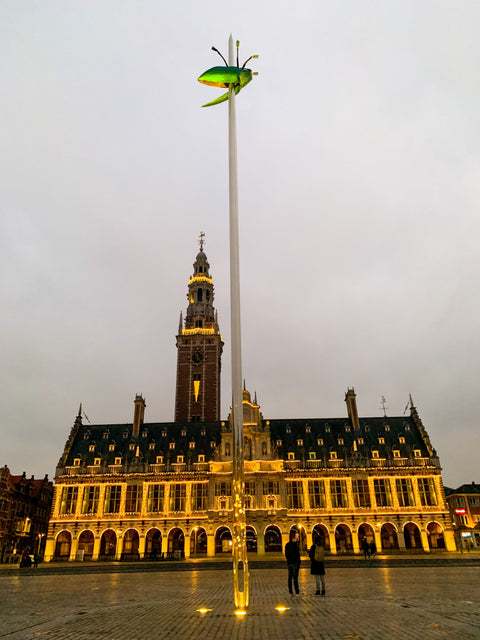The Birth of a New Library
After Belgium’s independence in 1830, a Catholic University was refounded—first in Mechelen (1834) and then in Leuven (1835). Work soon began on building a new university library. Thanks to large-scale acquisitions and donations, it quickly became one of Belgium’s most important libraries. Under Rector Ladeuze (1870–1940), the library was modernised between 1912 and 1914.

Destruction and Rebuilding
The library suffered devastating losses during both World Wars.
-
1914: German soldiers set fire to the University Hall and library, destroying nearly everything. Only a few charred books, known as Snow Whites, survived.
-
1921–1928: With support from American fundraising efforts and the personal involvement of Herbert Hoover, architect Whitney Warren designed the new neo-Renaissance library, crowned with an 80-meter tower inspired by Spanish architecture. The carillon with 48 bells commemorated American engineers who died in the Great War.
-
1940: During World War II, the library burned again, with only about 15,000 of its 900,000 books surviving.

A Living Memorial and Centre of Learning
Today, the KU Leuven University Library is both a modern library and a war memorial. The rescued Snow Whites are preserved in sealed glass cases. Its vast reading room is the heart of Leuven’s academic spirit, while the library tower offers a panoramic view of the city and insights into its turbulent past.

Source: https://bib.kuleuven.be/english/about/afbeeldingen/0129-bro-unibversiteitsbib-uk.pdf, https://www.visitleuven.be/universiteitsbibliotheek-toren)
Photos by Aslı Tezcan.



